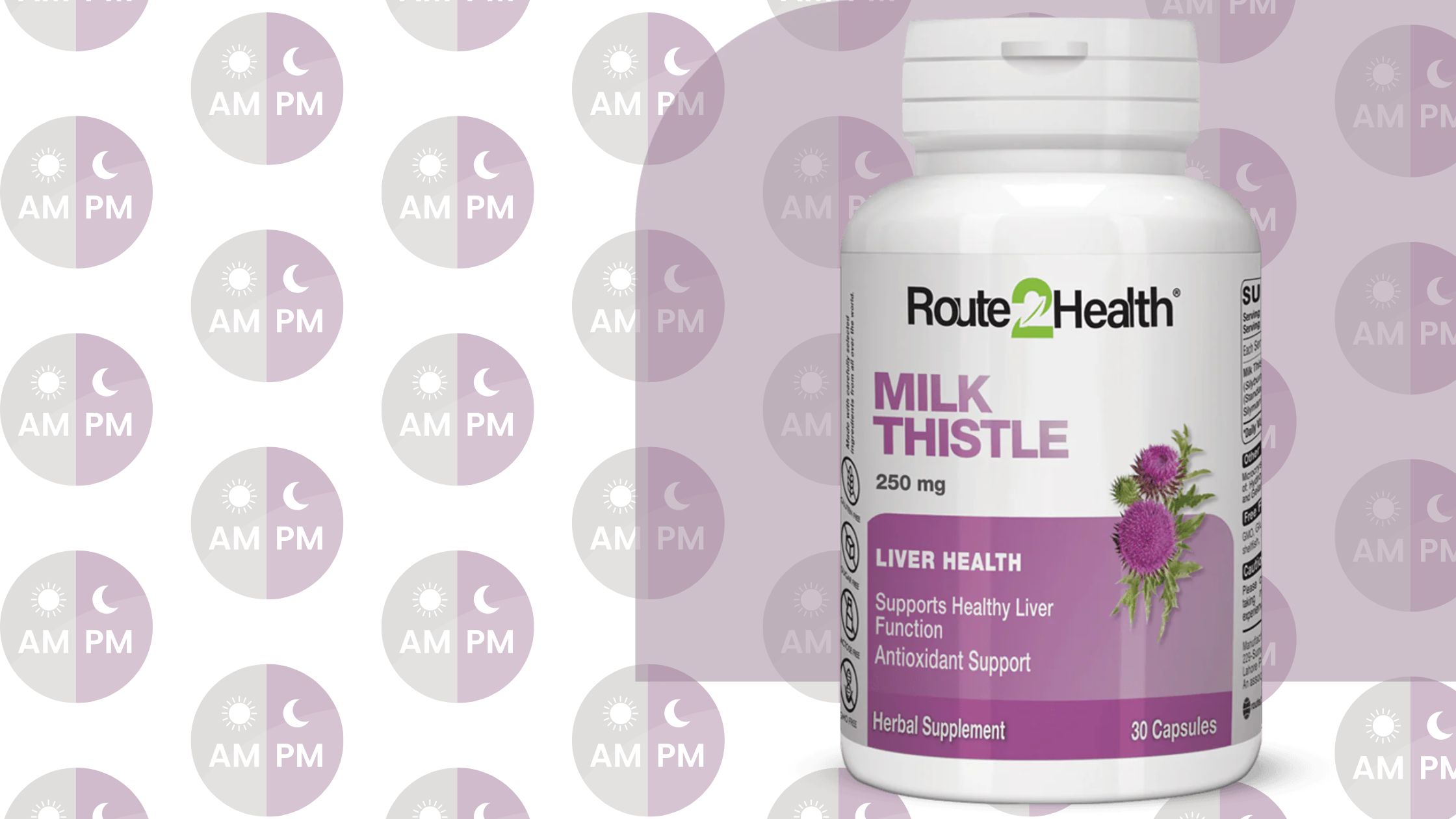
Milk Thistle 101: Best Time To Take It And Its Surprising Health Benefits
Milk thistle, a flowering herb native to the Mediterranean region, has been used for centuries as a natural remedy for various ailments. Known scientifically as Silybum marianum, this plant is particularly renowned for its liver-protective properties. But with its growing popularity, many people are left wondering: When is the best time to take milk thistle? Or do I take milk thistle with food? In this comprehensive guide, we’ll explore the benefits of milk thistle, answer these common questions, and delve into how it can support liver health, particularly for those with fatty liver disease.
What is Milk Thistle?
Milk thistle (Silybum marianum) is a flowering plant known for its active compound, silymarin. This compound is packed with antioxidants and anti-inflammatory properties that support liver health, aid digestion, and may even improve skin conditions.
Traditionally, milk thistle has been used to treat liver diseases, promote detoxification, and support overall digestive health. Modern research supports its benefits, particularly for liver-related conditions like fatty liver disease, hepatitis, and cirrhosis.
What Are The Health Benefits of Milk Thistle?
1. Supports Liver Health
The liver is one of the most vital organs in the body, responsible for detoxification, metabolism, and nutrient storage. Milk thistle silymarin helps protect the liver from toxins, reduce inflammation, and promote the regeneration of liver cells. This makes it particularly beneficial for individuals with fatty liver disease, a condition characterised by the accumulation of fat in liver cells.
2. Boosts Antioxidant Activity
Silymarin is a potent antioxidant that neutralises free radicals, which can damage cells and contribute to chronic diseases. By reducing oxidative stress, milk thistle may help protect against conditions like heart disease and certain cancers.
3. Supports Healthy Skin
Milk thistle’s detoxifying properties can also benefit the skin. By aiding liver function, it helps the body eliminate toxins that might otherwise contribute to acne, eczema, or other skin conditions.
4. Regulates Blood Sugar Levels
Some studies suggest that milk thistle may help improve insulin sensitivity and lower blood sugar levels in people with type 2 diabetes. This makes it a promising supplement for those managing blood sugar imbalances.
5. Promotes Digestive Health
Milk thistle can stimulate bile production, which aids in the digestion of fats. This can help alleviate symptoms of indigestion and bloating.

When Is the Best Time to Take Milk Thistle?
Another frequently asked question is, When is the best time to take milk thistle? While there’s no one-size-fits-all answer, many experts recommend taking milk thistle in the morning with breakfast. This allows the liver to benefit from its detoxifying properties throughout the day.
However, if you’re using milk thistle to support digestion, you might prefer taking it with your evening meal. Ultimately, the best time to take milk thistle depends on your individual health goals and lifestyle. Consistency is key, so choose a time that fits seamlessly into your daily routine.
Do I Take Milk Thistle With Food?
One of the most common questions about milk thistle is, Do I take milk thistle with food? The answer is yes. Taking milk thistle with a meal can enhance its absorption and reduce the risk of stomach upset. The presence of food in the stomach helps the body process the supplement more effectively, ensuring you get the maximum benefits.
For best results, take milk thistle with a meal that contains healthy fats, such as avocado, nuts, or olive oil. Silymarin is fat-soluble, meaning it dissolves in fat, so consuming it with fatty foods can improve its bioavailability.
Which Milk Thistle Is Best for Fatty Liver?
Fatty liver disease is a growing concern, particularly in Western countries where diets high in processed foods and sugars are common. If you want milk thistle to treat your fatty liver, look for a high-quality supplement that contains a standardised extract of silymarin. A standardised extract ensures that you’re getting a consistent and effective dose of the active compound. You must consider Route2Health’s Milk Thistle as part of your fatty liver treatment plan.
When choosing a milk thistle supplement, opt for one with at least 70-80% silymarin content. Additionally, consider products that are third-party tested for purity and potency. Some reputable brands also combine milk thistle with other liver-supportive ingredients, such as artichoke extract or dandelion root, for added benefits.
How Long Does Milk Thistle Stay in Your Liver?
Understanding how long milk thistle stays in your liver can help you optimise its use. Silymarin, the active compound in milk thistle, has a relatively short half-life of about 6 hours. This means that after 6 hours, half of the silymarin you consumed will have been metabolised and eliminated from your body.
To maintain consistent levels of silymarin in your system, it’s recommended to take milk thistle in divided doses throughout the day. For example, you might take one capsule with breakfast and another with dinner. This approach ensures that your liver receives a steady supply of silymarin, maximising its protective effects.
Conclusion
Milk thistle is a versatile and powerful herb with a wide range of health benefits, particularly for liver health. Whether you’re looking to support a fatty liver, boost antioxidant activity, or improve digestion, milk thistle can be a valuable addition to your wellness routine. Remember to take it with food for optimal absorption, and consider dividing your dose throughout the day to maintain consistent levels of silymarin in your system.
If you’re still wondering, When is the best time to take milk thistle? Which milk thistle is best for fatty liver? Consult a healthcare professional for personalised advice. With the right approach, milk thistle can help you achieve better health and well-being.
By incorporating milk thistle into your daily routine, you’re taking a proactive step towards supporting your liver and overall health. So why wait? Start reaping the benefits of this remarkable herb with Route2Health’s Milk Thistle today!
FAQs
1. Can I Take Milk Thistle on an Empty Stomach?
While you can take milk thistle on an empty stomach, it’s generally better to take it with food to enhance absorption and prevent stomach discomfort.
2. How Much Milk Thistle Should I Take Daily?
The recommended dosage of milk thistle varies depending on the product and your health goals. A typical dose ranges from 200-400 mg of silymarin per day. Always follow the instructions on the product label or consult a healthcare professional for personalised advice.
3. Are There Any Side Effects of Milk Thistle?
Milk thistle is considered safe for most people when taken as directed. However, some individuals may experience mild side effects, such as digestive upset, headaches, or allergic reactions. If you have a history of hormone-sensitive conditions, consult your doctor before using milk thistle, as it may have mild estrogenic effects.
4. Can Milk Thistle Help with Weight Loss?
While milk thistle is not a weight-loss supplement, its liver-supportive properties may indirectly aid weight management. A healthy liver is essential for efficient metabolism and fat processing.
5. Is Milk Thistle Safe for Long-Term Use?
Milk thistle is generally safe for long-term use when taken at recommended doses. However, if you’re using it to manage a specific health condition, it’s a good idea to periodically review your supplementation with a healthcare provider.




















































